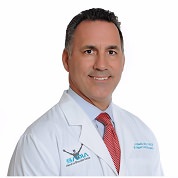Dr. Alejandro Badia offers tips to find best experts for Orthobiologic Treatments for Chronic Pain and Disease
MIAMI (PRWEB) March 12, 2019
When it comes to selecting a physician who uses “natural healing”, also called Orthobiologics, Stem Cell or PRP, to treat pain and diseases of joints, muscles, tendons and ligaments, “choose wisely,” says noted orthopedic surgeon Alejandro Badia, MD, quoting a line from the movie Indiana Jones.
“Some clinics and health centers have been built on the premise of providing patients natural healing of musculoskeletal disorders with PRP (platelet-rich plasma), stem cell injections or similar approaches, but the staff has little training or knowledge about the actual pathology involved,” he says.
His warning is particularly appropriate, since such “natural” treatments are often times not covered by health insurance providers, who consider the field of Orthobiologics “experimental.”
Orthobiologics involves harnessing the power of a person’s own biologic substances, including blood platelets (PRP therapy) and adult (mesenchymal) stem cells, to mitigate inflammation, relieve chronic musculoskeletal pain and repair orthopedic injuries.
“Patients for whom standard therapies have failed and who are contemplating orthobiologic options should seek the right health professional, one who is highly trained and offers a variety of appropriate treatments for musculoskeletal disorders, not just injecting stem cells or blood platelets with little knowledge or expertise,” he says.
Dr. Badia, known by peers as an expert in the field of Regenerative Medicine and natural healing, is founder and Chief Medical Officer of the Badia Hand to Shoulder Center and OrthoNOW®, where his team has successfully treated thousands of patients using surgical, non-surgical and OrthoBiologics all-natural therapy treatments.
Based on his experience, Dr. Badia offers these tips to any patient considering orthobiologic therapy:
- Do your homework. Find out what kind of training and experience health professionals or clinics have in Regenerative Medicine and numbers of patients they have treated successfully with these techniques.
- Ask questions about any recommended PRP or stem cell therapies. Learn how a specific procedure is performed, how long it will take, what the expected outcomes are. “In other words, scrutinize who plans to inject what in your body.”
- Manage expectations. Don’t assume a single treatment will resolve your problem. Orthobiologic therapy is a process. Although most patients require only one treatment to experience a difference, depending on the severity of the pain or injury, you may require multiple procedures or even a combination of different approaches. That’s also why the wholistic expertise of an orthopedic expert can make the difference to a patient’s overall success for quicker and long term results.
- Contribute to the treatment’s success by following your caregiver’s post-procedure recommendations.
- Understand your financial obligations. Anticipate your treatment will not be covered by an insurance plan.
Studies suggest all-natural treatments like PRP and stem cell therapies work, alone or in combination, by stimulating the regeneration of joints and soft tissues surrounding them. Use of these techniques has been reported in treatment of joint osteoarthritis and chronic tendinitis, tennis elbow, rotator cuff tears, carpal tunnel syndrome, back and neck injuries, degenerative spinal disc disease, restoration of ligaments and more.
Blood platelets deliver growth factors — antibodies, enzymes and proteins – to diseased or injured areas of the skeleton to promote repair, while stem cells can be harvested from a patient’s bone marrow or adipose (fat) tissue and then injected elsewhere to replace dying cells that have little or no regenerative capability, Dr. Badia explains.
Some scientists indicate more research is needed to evaluate long-term effectiveness of these non-surgical approaches, but smaller patient trials and clinical results have so far confirmed success of the techniques in the right candidates, based on age, general health status and healing potential.
Orthobiologic therapies have proven a viable option when standard treatments — anti-inflammatory medications, corticosteroid injections, physical therapy and exercise — fail to resolve a patient’s problem, says Dr. Badia.
Orthobiologic therapies are not without risk, according to the federal Food and Drug Administration (FDA). Side effects can include reactions at site of injection, failure of stem cells or platelets to do what is intended, and migration of stem cells away from the treatment area, changing into unwanted cell types, multiplying, even promoting tumor growth.
Dr. Badia concurs, advising caregivers to exercise caution when administering Orthobiologic treatments and exhorting patients to be especially careful when seeking help from a specialization in which practitioners often lack the necessary training and expertise.
The unlucky relic hunter in Indiana Jones selected the wrong religious artifact solely on appearance and immediately turned to dust. “When it comes to your own health, don’t base judgments simply on web site appearance and descriptions. ‘Choose wisely,’” Dr. Badia says.
Bio: Alejandro Badia, MD, FACS, internationally renowned hand and upper-limb surgeon and founder of Badia Hand to Shoulder Center and OrthoNOW®, a walk-in orthopedic care clinic. He is a member the American Society for Surgery of the Hand, American Association for Hand Surgery and the American Academy of Orthopedic Surgeons. He is a specialist in treating all problems related to the hand and upper extremity including trauma, sports injury, joint reconstruction, nerve injuries and arthroscopic surgeries. OrthoNOWcare.com and drbadia.com.

